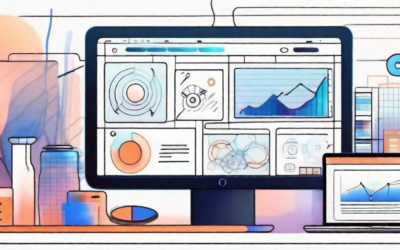In today’s technology-driven world, apps have become a necessity for businesses of all sizes. Whether it’s a mobile app for enhancing customer experiences or an internal app for streamlining operations, finding the right app development company is crucial. However, one of the biggest concerns for businesses is understanding the cost implications associated with app development. In this article, we will delve into the various factors that influence the pricing of app development, how the location can impact costs, budgeting tips, and the different pricing models of app development companies.
The Basics of App Development Costs
When it comes to app development costs, there are several factors that play a role in determining the final price tag. From the complexity of the app to the desired features and functionalities, each aspect contributes to the overall cost. Here are some key factors to consider:
Factors Influencing the Price of App Development
App development costs can vary widely depending on several factors. These include:
- The complexity of the app
- The number of features and functionalities
- The platform(s) on which the app will run (iOS, Android, etc.)
- The level of customization required
- The integration with other systems or APIs
- The timeline for development and launch
Developing an app involves careful consideration of various factors that can influence the final cost. The complexity of the app is one such factor that significantly impacts the pricing. Apps with basic functionalities and a simple user interface can be more affordable compared to highly complex apps that require extensive backend development, API integrations, and advanced features.
Complex apps often involve intricate workflows, multiple user roles, and sophisticated algorithms. These elements require more time and effort to design, develop, and test. As a result, the cost of developing a complex app is higher due to the increased resources and expertise required.
Furthermore, the number of features and functionalities desired in an app also affects the development cost. Apps with a limited set of features are generally less expensive to develop, while apps with a wide range of features and functionalities require more time and effort, thus increasing the cost.
The platform(s) on which the app will run is another crucial factor in determining the cost. Developing an app for multiple platforms, such as iOS and Android, requires additional resources and expertise. Each platform has its own set of development tools, guidelines, and requirements, which need to be considered and implemented. This adds to the complexity and cost of app development.
Customization is another aspect that can impact the cost of app development. Apps that require a high level of customization, tailored to specific business needs or user preferences, often require additional development time and effort. This customization can involve designing unique user interfaces, integrating specific functionalities, or implementing branding elements. The level of customization required directly influences the development cost.
Integration with other systems or APIs is also a factor to consider. If an app needs to connect with external systems, such as payment gateways, social media platforms, or third-party APIs, it requires additional development effort. The complexity of integrating these systems and ensuring seamless communication can contribute to the overall cost of app development.
Lastly, the timeline for development and launch plays a role in app development costs. If there is a tight deadline or a need for expedited development, it may require additional resources, such as more developers or longer working hours. This can increase the cost of development due to the need for faster delivery and potential trade-offs in terms of efficiency and optimization.
In conclusion, app development costs are influenced by various factors, including the complexity of the app, the number of features and functionalities, the platform(s) on which it will run, the level of customization required, the integration with other systems or APIs, and the timeline for development and launch. Understanding these factors is crucial for estimating and budgeting the cost of app development.
Breakdown of App Development Costs
Now that we understand the factors that influence app development pricing, let’s dive into the various cost components involved in the process.
Developing an app involves several stages, each with its own set of expenses. From pre-development to design and development, and finally post-development and maintenance, understanding these costs is crucial for budgeting and planning.
Pre-Development Expenses
Before the actual development work begins, there are certain pre-development expenses that need to be considered. These include:
- Market research and competitor analysis
- Designing wireframes and prototypes
- Creating a detailed scope of work
- Planning and project management
Market research and competitor analysis help identify the target audience, market trends, and potential competitors. Designing wireframes and prototypes allow for visualizing the app’s layout and functionality. Creating a detailed scope of work outlines the project’s requirements, timeline, and resources needed. Planning and project management ensure smooth execution and coordination throughout the development process.
Design and Development Costs
The design and development phase is where the actual building of the app takes place. This includes:
- UI/UX design
- Frontend development
- Backend development
- Database creation and integration
- Third-party API integration
This phase typically accounts for a significant portion of the overall app development costs as it involves coding, testing, and fine-tuning the app to ensure it meets the desired requirements. UI/UX design focuses on creating an intuitive and visually appealing user interface. Frontend development involves implementing the design elements and user interactions. Backend development handles the server-side logic and database integration. Database creation and integration ensure efficient data storage and retrieval. Third-party API integration allows for additional functionalities and services to be incorporated into the app.
Post-Development and Maintenance Costs
Once the app is developed, there are ongoing costs to consider, including:
- Quality assurance and testing
- App store submission and review
- Bug fixing and updates
- Server maintenance and hosting
- Technical support and customer service
Quality assurance and testing are essential to identify and resolve any issues or bugs before the app is released. App store submission and review involve the process of getting the app approved and listed on various app stores. Bug fixing and updates ensure that the app remains stable and functional over time. Server maintenance and hosting are necessary for keeping the app’s backend infrastructure running smoothly. Technical support and customer service provide assistance to users and address any inquiries or concerns they may have.
These costs are essential for ensuring the app remains functional, secure, and up-to-date with the latest technology trends. Ongoing maintenance and support contribute to the longevity and success of the app in the competitive app market.
The Impact of Location on App Development Costs
Another factor that plays a significant role in app development costs is the location of the development company.
Cost Differences Between In-house and Outsourced Development
Many businesses struggle with the decision to develop an app in-house or outsource it to a third-party company. While in-house development may provide more control and flexibility, it can be costlier due to higher salaries and overhead expenses. On the other hand, outsourcing app development to countries with lower labor costs can result in significant cost savings without compromising on quality.
Global Pricing Variations in App Development
The cost of app development can vary significantly based on the location of the development company. For example, companies based in North America and Western Europe tend to charge higher rates compared to those in Eastern Europe, Asia, or South America. It’s essential to consider these variations in pricing when evaluating different app development companies.
How to Budget for App Development
Now that we have explored the various cost components and pricing factors, let’s discuss how businesses can effectively budget for app development.
Tips for Allocating Resources in App Development
When allocating resources for app development, it’s crucial to consider the scope of the project, the desired features, and the available budget. Here are some tips to help you allocate resources effectively:
- Start with a clear project scope and prioritize features.
- Work closely with the development team to set realistic timelines and milestones.
- Consider the long-term maintenance and support costs.
- Have a contingency budget for unexpected expenses.
Understanding the Return on Investment in App Development
One of the most critical aspects of budgeting for app development is understanding the potential return on investment (ROI). Analyzing the expected business benefits and revenue generation opportunities can help justify the costs associated with app development.
Navigating the Pricing Models of App Development Companies
App development companies offer different pricing models to accommodate the unique needs and budgets of businesses.
Fixed Price vs. Time and Material Pricing
The two most common pricing models for app development are fixed price and time and material pricing.
Fixed price: In this model, the development company provides a fixed price quote for the entire project based on the agreed-upon scope of work. This model is suitable for businesses with a fixed budget and well-defined requirements.
Time and material pricing: This model is more flexible as it allows businesses to pay for the actual time and resources invested in development. It is ideal for projects with evolving requirements and scope.
The Pros and Cons of Different Pricing Models
Both fixed price and time and material pricing models have their pros and cons. While fixed price provides budget certainty and a clear scope of work, it may be less adaptable to changes. Time and material pricing, on the other hand, offers greater flexibility but can be challenging to manage if not properly controlled.
In conclusion, understanding the cost of app development companies is crucial for businesses looking to invest in building an app. By considering the various factors that influence pricing, the impact of location, effective budgeting strategies, and the different pricing models, businesses can make informed decisions and ensure successful app development within their budgetary constraints.




